Related Research Articles
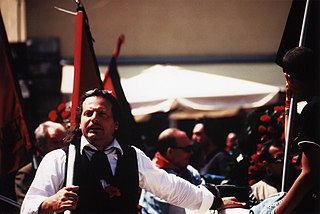
Anarchism in France can trace its roots to thinker Pierre-Joseph Proudhon, who grew up during the Restoration and was the first self-described anarchist. French anarchists fought in the Spanish Civil War as volunteers in the International Brigades. According to journalist Brian Doherty, "The number of people who subscribed to the anarchist movement's many publications was in the tens of thousands in France alone."
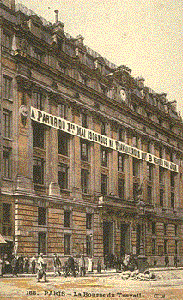
The Bourse du Travail, a French form of the labour council, were working class organizations that encouraged mutual aid, education, and self-organization amongst their members in the late nineteenth and early twentieth centuries.
The International Anarchist Congress of Amsterdam took place from 24 August to 31 August 1907. It gathered delegates from 14 countries, among which important figures of the anarchist movement, including Errico Malatesta, Luigi Fabbri, Benoît Broutchoux, Pierre Monatte, Amédée Dunois, Emma Goldman, Rudolf Rocker, Christiaan Cornelissen, et al.

The Confédération générale du travail unitaire, or CGTU, was a trade union confederation in France that at first included anarcho-syndicalists and soon became aligned with the French Communist Party. It was founded in 1922 as a confederation of radical unions that had left the socialist-dominated General Confederation of Labour (CGT), and in 1936 merged back into the CGT.

Fédération Anarchiste is an anarchist federation in France, Belgium and Switzerland. It is a member of the International of Anarchist Federations since the latter's establishment in 1968.
Alexandre Hébert, was a French activist, anarchist and trade unionist. He had a pivotal role in the accession of anarchists to the French trade-unions congress Workers' Force (CGT-FO). He became secretary of the departmental union of Loire Atlantique, from its inception, as well as Raymond Patoux, secretary of the departmental union of Maine et Loire, as shown by the research Libertaires et syndicalistes révolutionnaires dans la Confédération Générale du Travail - Force Ouvrière (1946-1957) by Guillaume Trousset, andL'Union Départementale CGT-Force ouvrière de Maine et Loire de 1948 à 195 by Manuella Noyer. He played an important role in the accession to these unions of militants of the autonomous Fédération de l'Education Nationale in 1982, 1983 and 1984. Its activities of militant trade unionism had been permanently in the style set out by Fernand Pelloutier in the letter to his anarchist friends Lettre aux anarchistes in 1899. He didn't cease to fight against all the followers of trade unionism who were subservient to political parties, Christian trade unionism, autonomous trade unionism, partisan trade unionism, and all varieties of company sponsored or integrated trade unionism; he could never get along with the followers of all these sorts of trade unionism! A fighter for workers' emancipation in all circumstances, he did not hesitate to separate himself from some of his anarchist fellows who took another way, including that of joining the varieties of Christian trade unionism. As a militant anarchist, he was of those who reconstructed the anarchist movement after the second world war, through the Fédération anarchiste; in 1954, he was one of those who reconstructed the Fédération anarchist destroyed by the Leninist action of Georges Fontenis; in 1961, he contributed with his followers of the Groupe Fernand Pelloutier to the publication of the news bulletin L'Anarcho-syndicaliste, prelude to the constitution of the Union des anarcho-syndicalistes. Not having any sectarianism, he tried at all times to gather together the activist workers anxious to preserve the independence of trade unions; a friend of Pierre Boussel alias Pierre Lambert, he certainly helped the abandonment by the members of his Trotskyist party of the Marxist–Leninist-Trotskyist idea of the need to link the unions to the “revolutionary party”. Free-thinker, secular activist, and rationalist, he took part in the initiative of the l'Appel aux laïque against the policy concerning the public schools and the institutions of the Republic followed by the President of the Republic François Mitterrand.

The Left in France The distinction between left and right wings in politics derives from the seating arrangements which began during the Assemblee Nationale in 1789. During the 1800s, left largely meant support for the Republic, whereas right largely meant support for the monarchy.

Georges Louis François Yvetot was a French typographer, anarcho-syndicalist and anti-militarist. He was secretary general of the Fédération des Bourses de travail and deputy secretary general of the Confédération générale du travail in the period leading up to World War I (1914–18). He kept a low profile during the war, and in 1918 was dismissed from the CGT leadership. After the war he contributed to many anarchist journals. He died in poverty during World War II (1939–45).
Henri Félix Camille Beaulieu was a French accountant, naturist, anti-militarist, anarchist and then communist. He wrote many articles in radical journals. In his later years he was active in the Committee of Social Defence (CDS), an organization that helped political prisoners and exiles.

The Association internationale antimilitariste was a pacifist association founded in Amsterdam in 1904 that was dedicated to fighting militarism. Although technically open to all political views, it was dominated by anarchists. The members agreed that the workers should revolt if war were declared, but disagreed on whether soldiers should desert. They were subjected to police surveillance and arrests. By 1908 the association had few remaining members.

Marie Mayoux was a French teacher, revolutionary syndicalist, pacifist and libertarian. She and her husband François Mayoux were imprisoned during World War I (1914–18) for her pacifist activities.
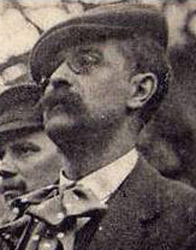
Vicomte Gilbert de Rorthays, alias René de Marmande, was a French journalist and anarchist.

Paul Delesalle was a French anarchist and syndicalist who was prominent in the trade union movement. He started work as a machinist, became a journalist, and later became a bookseller, publisher and writer.
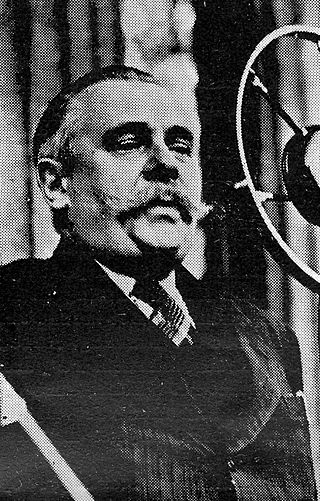
Gaston René Léon Monmousseau was a French railway worker, trade union leader, politician and author, from a rural working-class background. He became an anarcho-syndicalist, then a communist, and played a leading role in the French Communist Party and in the national trade union movement both before and after World War II (1939–45).
Le Libertaire is a Francophone anarchist newspaper established in New York City in June 1858 by the exiled anarchist Joseph Déjacque. It appeared at slightly irregular intervals until February 1861. The title reappeared in Algiers in 1892 and was then produced in Brussels between 1893 and 1894.
Georges Fontenis was a school teacher who worked in Tours. He is more widely remembered on account of his political involvement, especially during the 1950s and 1960s.
Paul Lapeyre was a militant anarchist, anarcho-syndicalist and free-thinker.
Anarchism spread into Belgium as Communards took refuge in Brussels with the fall of the Paris Commune. Most Belgian members in the First International joined the anarchist Jura Federation after the socialist schism. Belgian anarchists also organized the 1886 Walloon uprising, the Libertarian Communist Group, and several Bruxellois newspapers at the turn of the century. Apart from new publications, the movement dissipated through the internecine antimilitarism in the interwar period. Several groups emerged mid-century for social justice and anti-fascism.
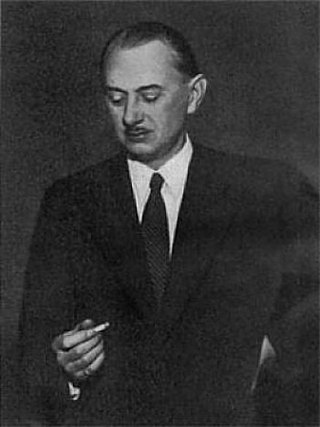
Ernest "Ernestan" Tanrez was a theoretician of Libertarian socialism and an important figure in Belgian anarchism.
The Coordination of Anarchist Groups was a French anarchist organization that split off from the Anarchist Federation at its 60th congress in June 2002.
References
- 1 2 Dupuy, Guillaume Davranche, Rolf (2021-12-13), "MATTART Camille", Dictionnaire des anarchistes (in French), Paris: Maitron/Editions de l'Atelier, retrieved 2022-03-01
{{citation}}: CS1 maint: multiple names: authors list (link)